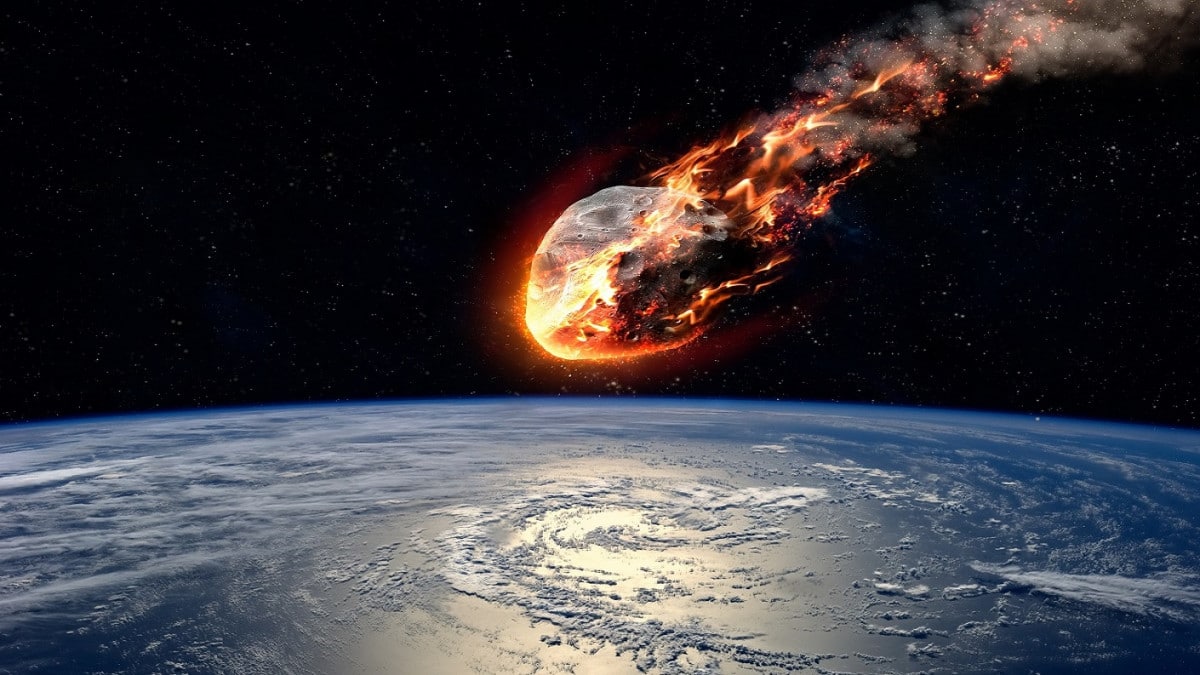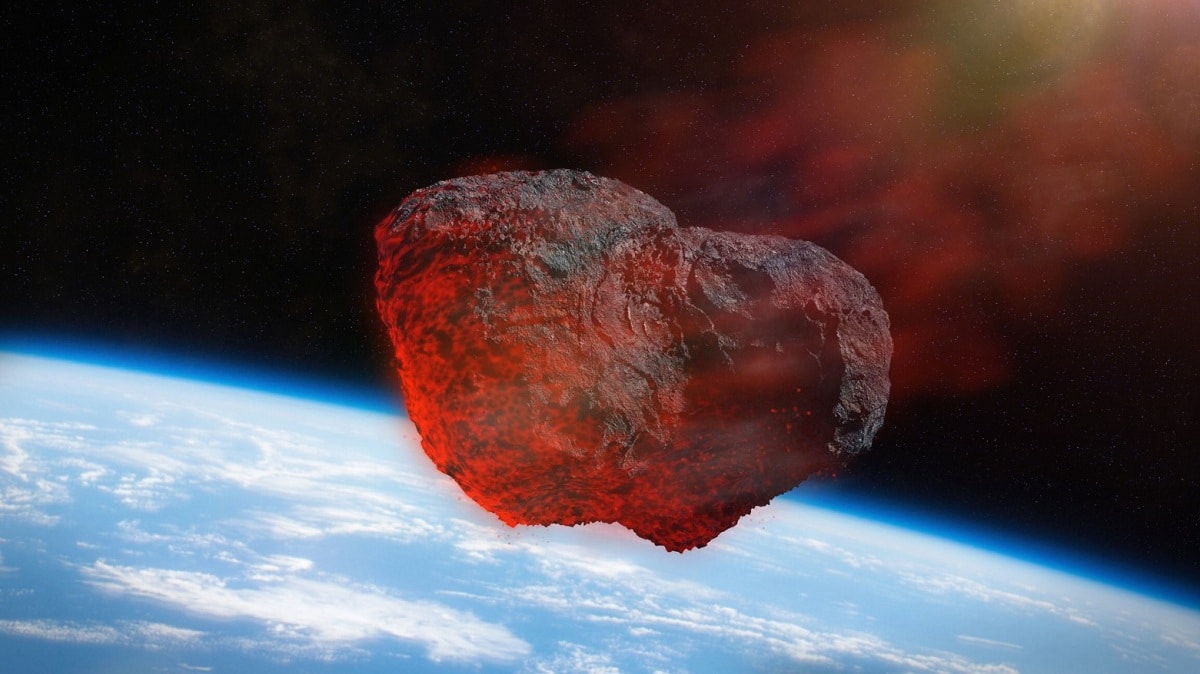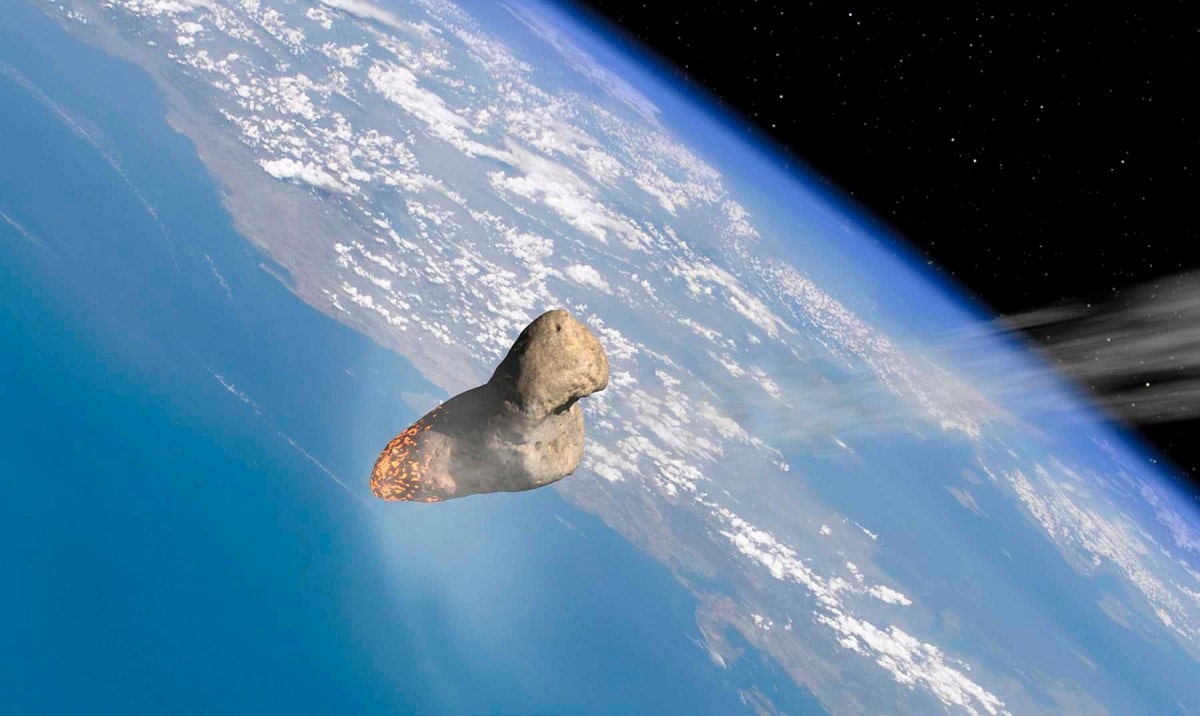
Meteorites have always been seen in movies when falling on our planet. There has also been a lot of talk about the extinction of the dinosaurs due to the impact of a meteorite in our ecosystem. However, there are many people who do not know well what is a meteorite technically and what its existence implies.
Therefore, we are going to dedicate this article to tell you everything you need to know about what a meteorite is, its characteristics and types.
What is a meteorite

The definition of meteorites can be said as a fragment of a celestial body that falls on planet Earth or on any other star. This implies that the rocky body must be able to reach the surface of a star leaving behind a bright trail of light that we call a meteor.
Therefore, meteorites can not only fall on the earth, but also reach any other star: Mars, Venus, the surface of the moon, etc.
As for the earth, it has its own natural barrier to resist this phenomenon: the atmosphere. This layer of gas can cause most of the interplanetary material that reaches the atmosphere to decompose before it hits the surface.. Larger meteorites break into small pieces, some of which may reach the ground.
When they pass, they produce the meteors we mentioned earlier. When these fireballs explode in the atmosphere, they are called fireballs. Most meteorites are imperceptible or microscopic when they reach the surface. However, others can be found for further investigation and analysis.
Key features

Meteorites have irregular shapes and various chemical compositions. Rock meteors are estimated to be more abundant than metal meteors or metal rock meteors (at least depending on the impact on earth). Like comets, many of them contain material from the formation of the solar system, which can provide valuable scientific information.
Meteorites typically range in size from a few centimeters to a few meters, and are usually located in the center of the crater created when they fall. That is why many of them were discovered during geological prospecting hundreds or thousands of years later.
It is estimated that around 100 meteorites of different sizes and compositions enter the surface of our planet each year, some are very small and others are more than a meter in diameter. Most substances that enter the atmosphere are not immune to friction erosion on their downward trajectory, but many other substances can. If a witness witnessed its impact with the ground, it was called a 'fall', and if it was discovered later, it was called a 'discovery'.
Have been registered and registered approximately 1.050 falls and approximately 31.000 discoveries. Meteorites are given the name of the place where they were found or witnessed their fall, usually followed by a combination of numbers and letters to distinguish them from other meteorites that fell in the same area.
Formation of a meteorite

Meteorites can come from many sources. Some are just remnants from the formation (or destruction) of larger astronomical objects (such as satellites or planets). They can also be fragments of asteroids, such as those that abound in the asteroid belt between the inner planets and the outer planets of our solar system.
In other cases, they separated from the comet, losing smaller chunks in their wake. After possessing one of these origins, they are still floating or thrown into space at high speed due to explosions or other similar phenomena.
Types of meteorites
Depending on the origin, composition or longevity that meteorites have, they are classified into different types. Let's see which is the most important classification according to all these parameters:
Primitive Meteorites: These meteorites are also called chondrites and come from the formation of the solar system. Therefore, they will not change by various geological processes and remain unchanged for approximately 4.500 billion years.
- Carbonaceous chondrite: It is believed that they are the chondrites furthest from the sun. In its composition we can find 5% carbon and 20% water or various organic compounds.
- Ordinary chondrites: They are the most common chondrites that reach Earth. They usually come from smaller asteroids, and iron and silicate are observed in their composition.
- Chondrite enstatites: They are not very abundant, but their composition is the only one similar to the original formation of our planet. Therefore, scientists believe that their aggregation will lead to the formation of our planet.
- Molten meteorites: this type of meteorite is the result of the partial or complete fusion of the main body of its origin, and undergoes a metamorphic process inside.
- Achondrites: They are igneous rocks that originated from other celestial bodies in the solar system. For this reason, their name is related to their origin, although most of them have an undetermined origin.
- Metallic: Its composition is based on more than 90% metals, and its origin is the nucleus of a large asteroid, extracted from a large impact.
- Metalloros: Its composition is equal to metal and silicon. They come from inside large asteroids.
Differences with asteroids
In some cases, the terms meteorite and asteroid are used interchangeably. However, this is not entirely true, there are multiple differences between the two concepts.
Asteroids They are rocky celestial bodies that orbit the sun and Neptune, normally oscillating between Mars and Jupiter. A meteorite is a small particle of this asteroid that can decompose in the atmosphere and even reach the surface of the earth.
According to their position in the solar system, if they orbit between Mars and Jupiter, they can be classified as belonging to the asteroid belt, if they orbit close to the earth, they can be classified as NEA or asteroid, if they are in orbit of Jupiter. , belongs to Trojans, if they are located outside the Earth's own solar system or in the same asteroids in orbit, because they are captured by Earth's gravity.
I hope that with this information you can learn more about what a meteorite is and its characteristics.